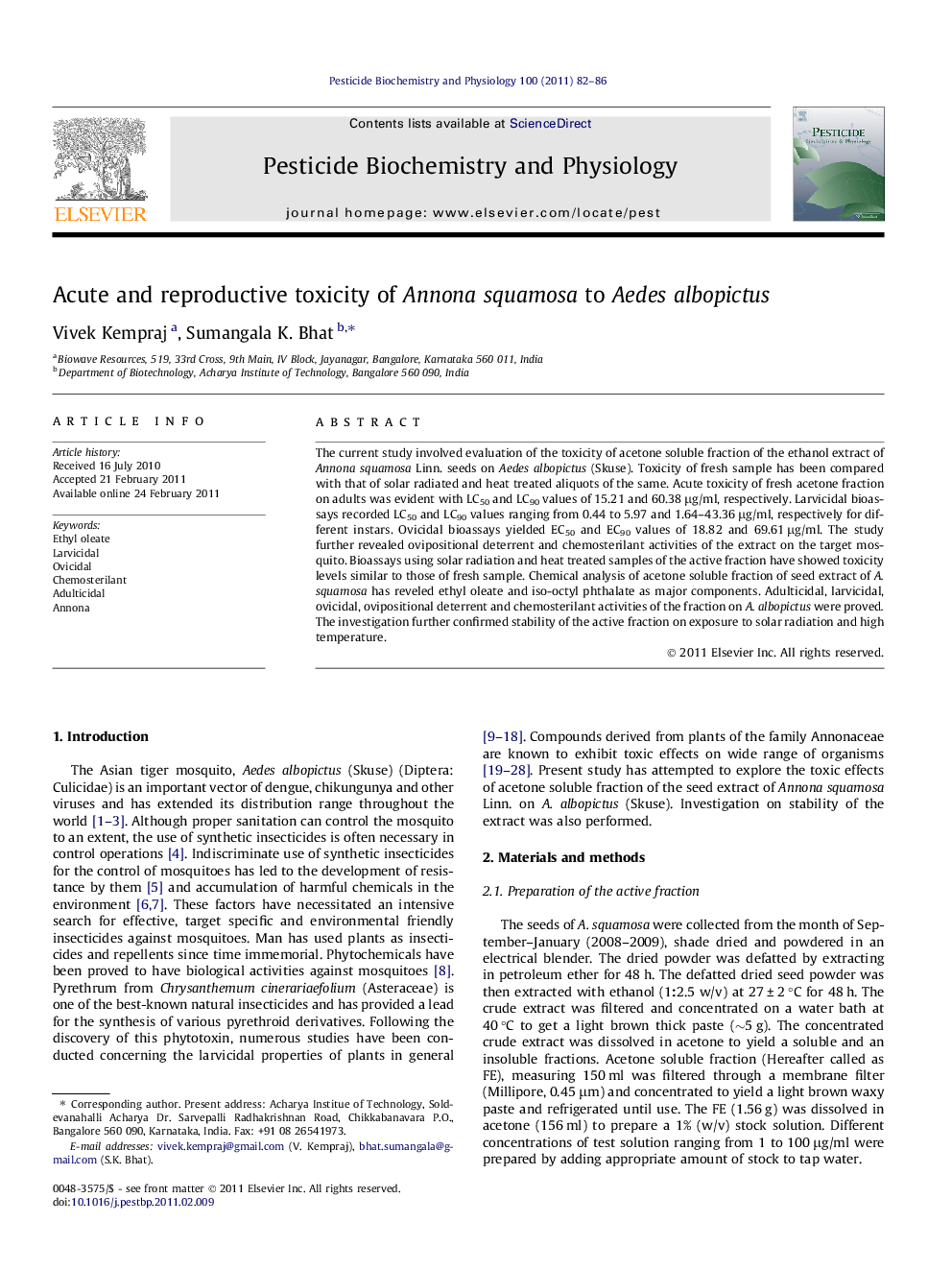| Article ID | Journal | Published Year | Pages | File Type |
|---|---|---|---|---|
| 2009773 | Pesticide Biochemistry and Physiology | 2011 | 5 Pages |
The current study involved evaluation of the toxicity of acetone soluble fraction of the ethanol extract of Annona squamosa Linn. seeds on Aedes albopictus (Skuse). Toxicity of fresh sample has been compared with that of solar radiated and heat treated aliquots of the same. Acute toxicity of fresh acetone fraction on adults was evident with LC50 and LC90 values of 15.21 and 60.38 μg/ml, respectively. Larvicidal bioassays recorded LC50 and LC90 values ranging from 0.44 to 5.97 and 1.64–43.36 μg/ml, respectively for different instars. Ovicidal bioassays yielded EC50 and EC90 values of 18.82 and 69.61 μg/ml. The study further revealed ovipositional deterrent and chemosterilant activities of the extract on the target mosquito. Bioassays using solar radiation and heat treated samples of the active fraction have showed toxicity levels similar to those of fresh sample. Chemical analysis of acetone soluble fraction of seed extract of A. squamosa has reveled ethyl oleate and iso-octyl phthalate as major components. Adulticidal, larvicidal, ovicidal, ovipositional deterrent and chemosterilant activities of the fraction on A. albopictus were proved. The investigation further confirmed stability of the active fraction on exposure to solar radiation and high temperature.
Graphical abstractAdulticidal, larvicidal, ovicidal, oviposition deterrent and chemosterilant effects of Fresh seed Extract [FE] on Aedes albopictus.Adulticidal, larvicidal, ovicidal, oviposition deterrent and chemosterilant effects of Heat Treated seed Extract [HT] on Aedes albopictus.Adulticidal, larvicidal, ovicidal, oviposition deterrent and chemosterilant effects of Solar Ratdiated seed Extract [NC] on Aedes albopictus.Figure optionsDownload full-size imageDownload as PowerPoint slideResearch highlights► Study revealed acute and reproductive toxicity of seed extract of Annona squamosa on Aedes albopictus. ► Acetone soluble fraction of the ethanol extract is proved to be the active component. ► Adulticidal, larvicidal, ovicidal, oviposition deterrent and chemosterilant activities recorded. ► Toxicity of the component persisted even after exposure to high temperature and solar radiation. ► Findings have possible application in the field of public health.
